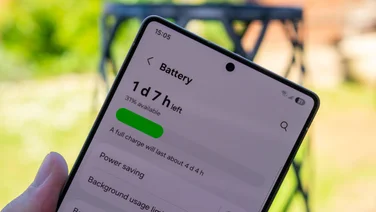To help us provide you with free impartial advice, we may earn a commission if you buy through links on our site. Learn more

The new Moto X is the follow-up to the superb… Moto X. With a release date set for the end of September the new Moto X is within grasp, but what can you expect? At £419.99 SIM free, it’s considerably more expensive than its predecessor, but Motorola is very clear that this phone is designed to compete with the Samsung Galaxy S5, making it a true flagship handset.
While the Moto X was a brilliant mid-range handset, the much-rumoured new version is aiming for the very highest end of the market. To coincide with the launch of the new Moto X, Motorola is bringing Moto Maker, the online service that lets people customise their Moto X before purchase, to the UK. That means you can deck out the new Moto X with real leather and wood or a personalised engraving. The 16GB Moto X with Moto Maker will cost from £439.99, with the 32GB version starting at £479.99.
We’ve compared the old Moto X with the new Moto X using specifications only. We won’t truly be able to judge speed, performance and camera quality until we’ve done a full review but an in-depth breakdown of the numbers should give you a good idea of how it compares.
DESIGN
Dimensions: The new Moto X is considerably larger than its predecessor. It measures 72.4mm wide, 140.8mm high and 3.8mm at its thinnest point. By comparison the old Moto X is 65.9mm by 129mm by 5.8mm. So while larger, the new Moto X is also about 2mm thinner. It is also just a shade heavier, 144g compared to 139g. Being five grams heavier is pretty good going for a phone with a considerably larger footprint.

Materials: The original Moto X had a plastic chassis with a soft touch rear panel, but the new Moto X has an aluminium frame and a variety of different back panels thanks to the chance to customise it with the new UK Moto Maker design service.
With the new Moto X, the back can be simply matt plastic, or real wood or leather, adding an extra touch of class. There’s also an option to have it engraved. All this adds up to make a much classier phone that is made of high-quality materials. The move from plastic to aluminium is certainly a welcome one and will give the new Moto X a premium feel.
DISPLAY
This is the main, stand-out difference between the two phones. At 5.2in the new Moto X has a bigger screen that puts it more on a par with other flagship phones such as the Samsung Galaxy S5. By comparison the old Moto X had a smaller 4.7in display, making it much more compact and easy to use one-handed.
The new Moto X also has a Full HD 1,920×1,080 resolution, which gives it a pixel density of 423ppi. That’s a lot of pixels, particularly when the old Moto X only had a resolution of 1,280×720 and a 361ppi.
Both phones use the same AMOLED panel technology, though, so colours and contrast will be top notch no matter which phone you decide to go for. Still, in terms of size, resolution and overall clarity, the new Moto X is a clear winner here.

PERFORMANCE
Processor: Inside, the new Moto X has a super-speedy quad-core 2.5GHz Qualcomm Snapdragon 801 processor – the same processor in the Samsung Galaxy S5, LG G3 and the newly-announced Sony Xperia Z3 and Z3 Compact.
The old Moto X runs a quad-core 1.7GHz Qualcomm Snapdragon S4 Pro processor. We’ve not been able to benchmark the new Moto X yet, but we’d expect the faster and more recent processor to easily out-perform the S4 Pro.
The S4 Pro, for example, scored 1,089ms in the SunSpider JavaScript benchmarks – a respectable score for a sub-£300 phone – but other phones we’ve tested with the 2.5GHz Snapdragon 801 processor have all been much faster, ranging from 391ms with the Galaxy S5 to 649ms with the G3.
Battery: The new Moto X’s battery is also slightly bigger at 2,300mAh compared to 2,200mAh in the old Moto X, but the new Moto X is likely to need that extra juice to power its larger screen. We’ll need to do a full battery test to see how the two compare before we can say whether the extra mAhs have any effect on the new X’s battery life, though.
Storage: The old Moto X was only available with 16GB of storage, but the new Moto X comes in both 16GB and 32GB versions – albeit at a hefty premium through the Moto Maker service. We think 16GB is plenty of space for most users, but those with particularly large music and video collections may want to consider the 32GB model, as neither the new or old Moto X phones have a microSD card slot, meaning you’re stuck with the storage you pick at purchase.
CAMERA
Pretty much everything about the new Moto X is an improvement on the original and the camera is no different. The new Moto X has a 13-megapixel (f2.25) camera with dual flash and support for 4K video capture and 4X zoom. The old Moto X has a 10-megapixel (f2.4) camera with LED flash, 1080p video capture and 4x zoom. We’ll bring you a side-by-side camera shoot out as soon as we can.

CONCLUSION
All these improvements come at a cost. At £419.99, the new Moto X is almost twice as expensive as its predecessor, which at time of writing you can currently pick up for £244.79. That’s a huge jump in price and one that many people might find hard to justify.
Phones that cost under £300 are tempting SIM-free purchases, but at £419.99 the new Moto X will be too expensive for most. Instead, it’s more likely to be a phone you’d buy on a contract, which puts it up against firm favourites such as the Samsung Galaxy S5 and iPhone 5s. While the old Moto X was, and still is, a great value mid-range phone (which we’d still recommend if you don’t want to spend more than £300), the new Moto X will have its work cut out for it when we finally get our hands on a review sample later this month. Stay tuned for our final verdict.





